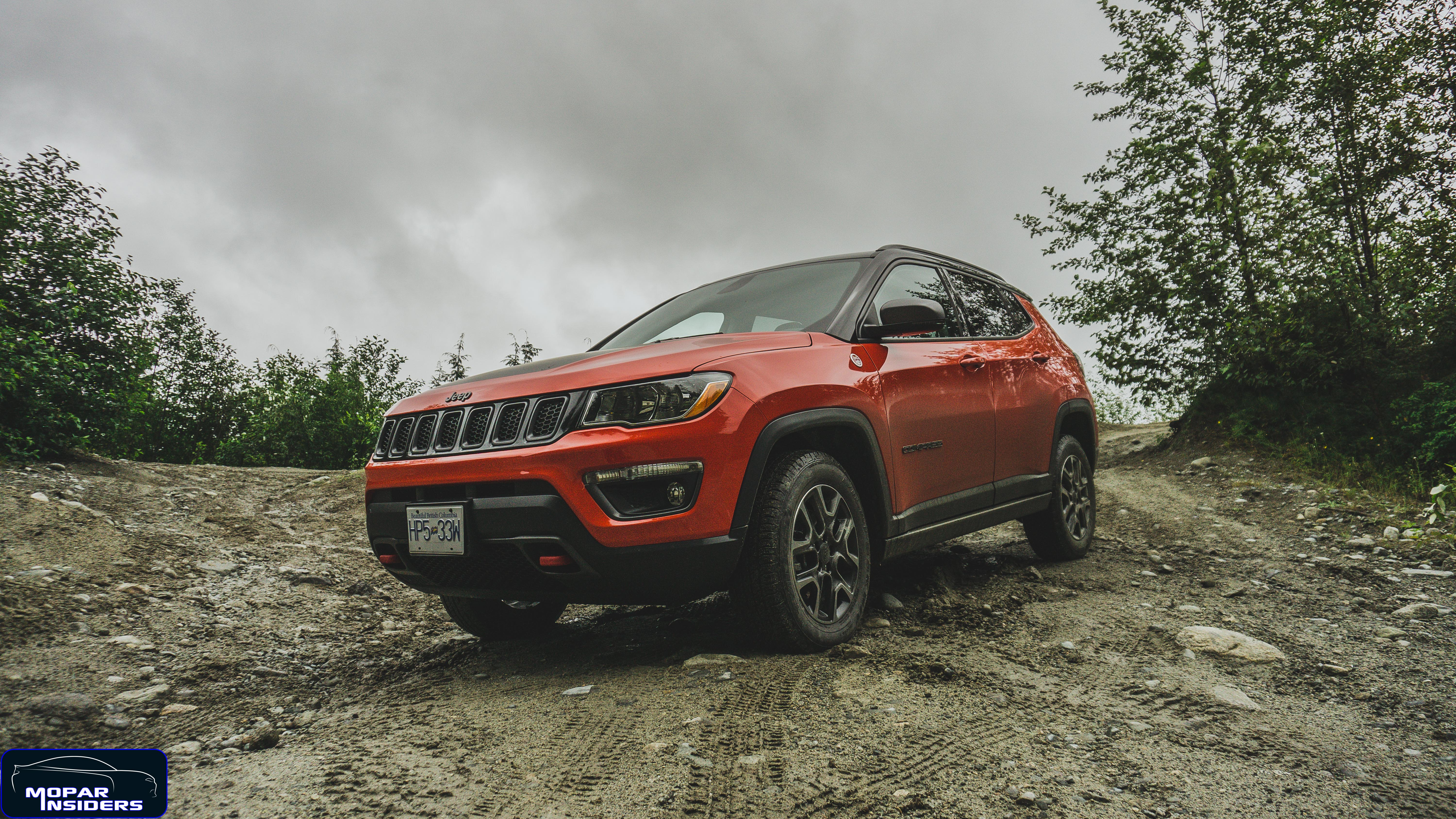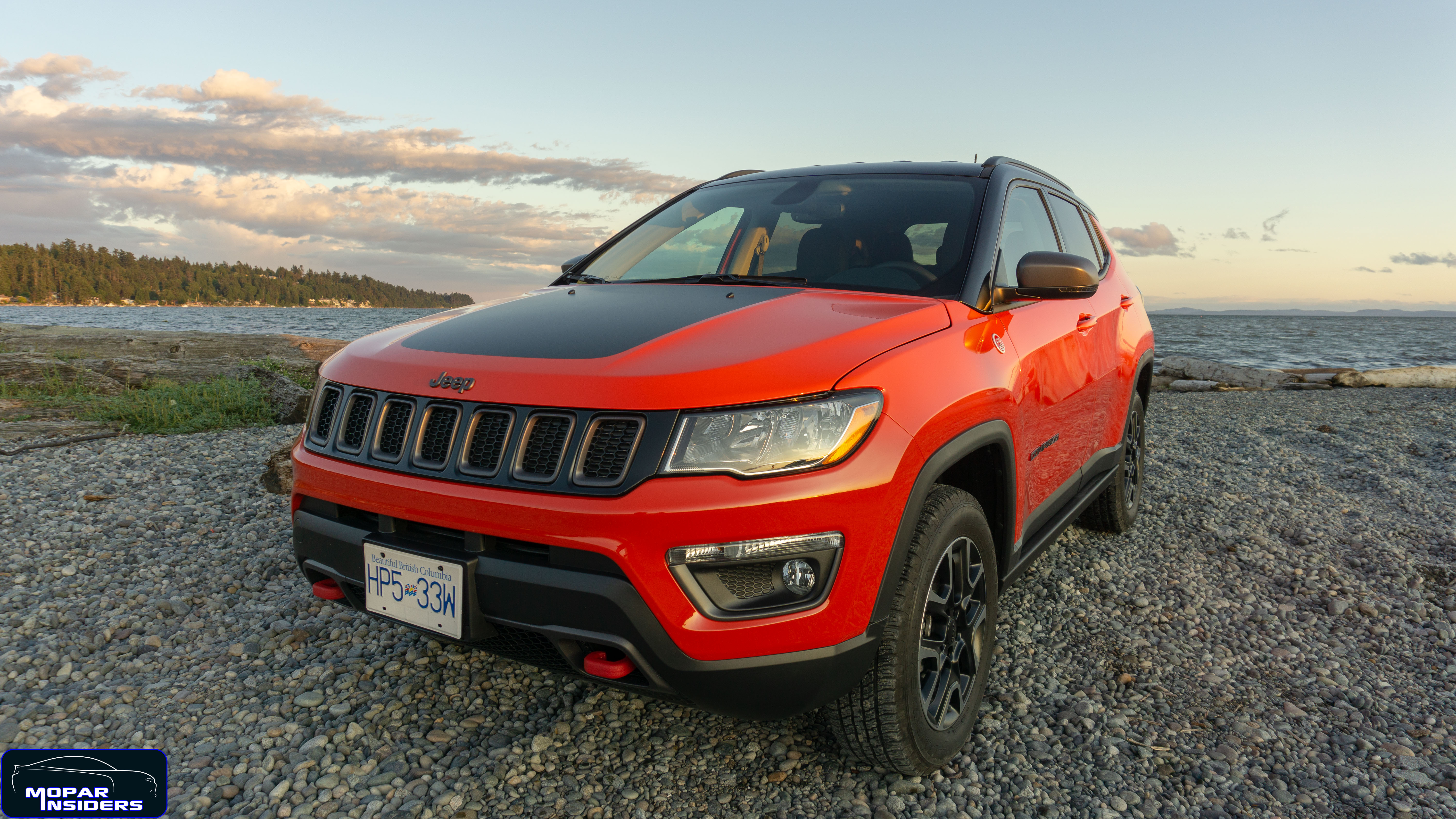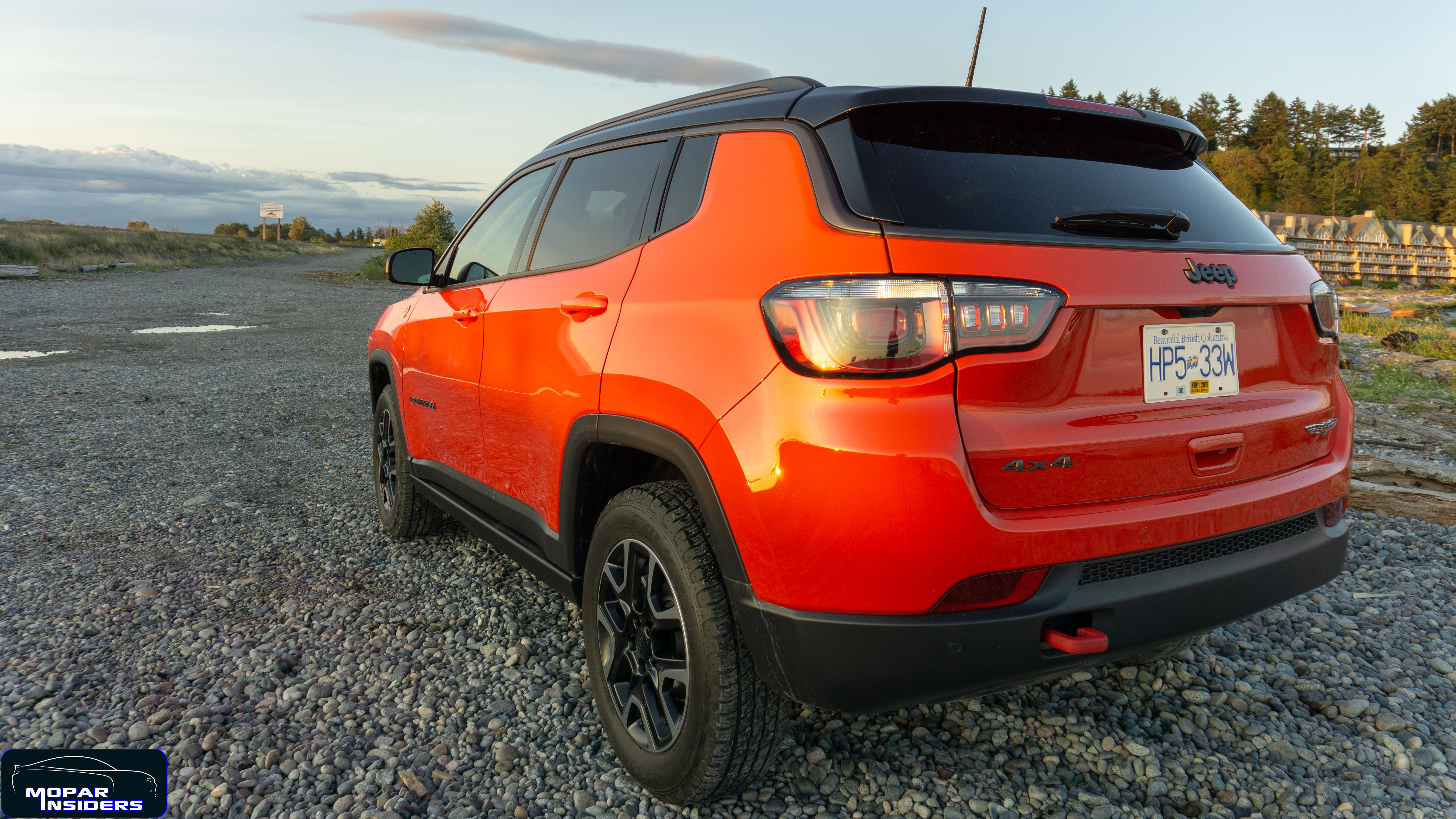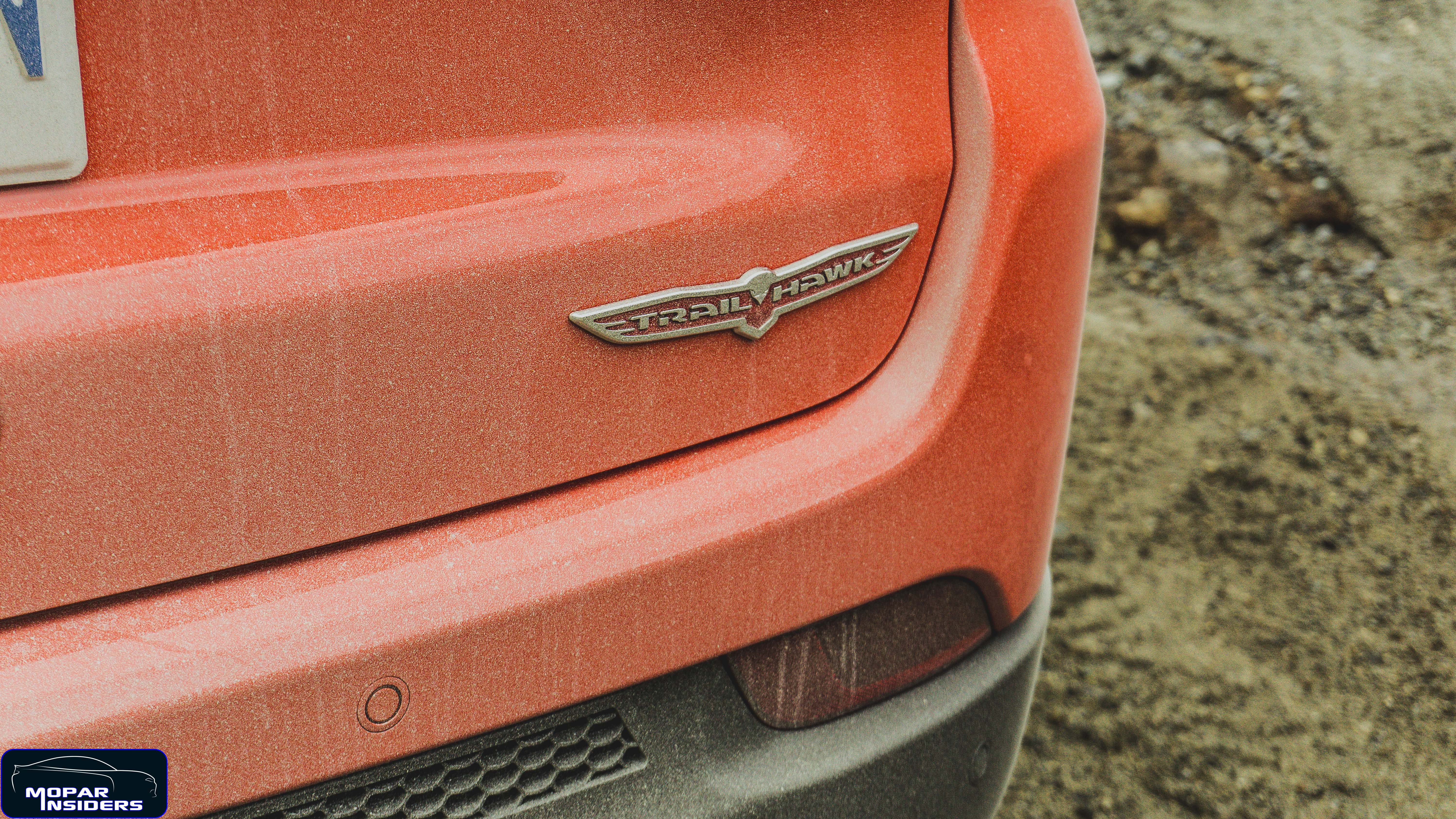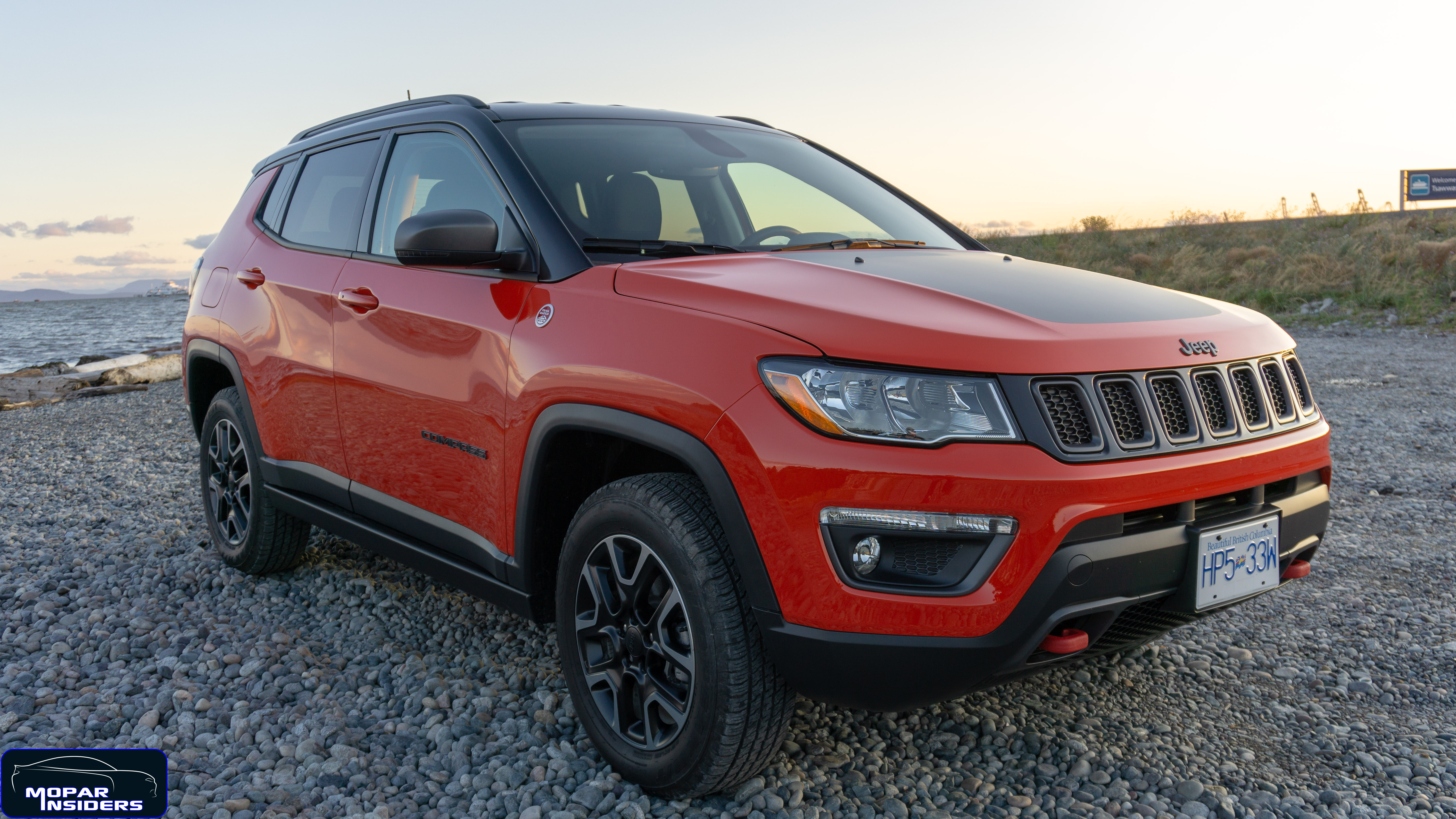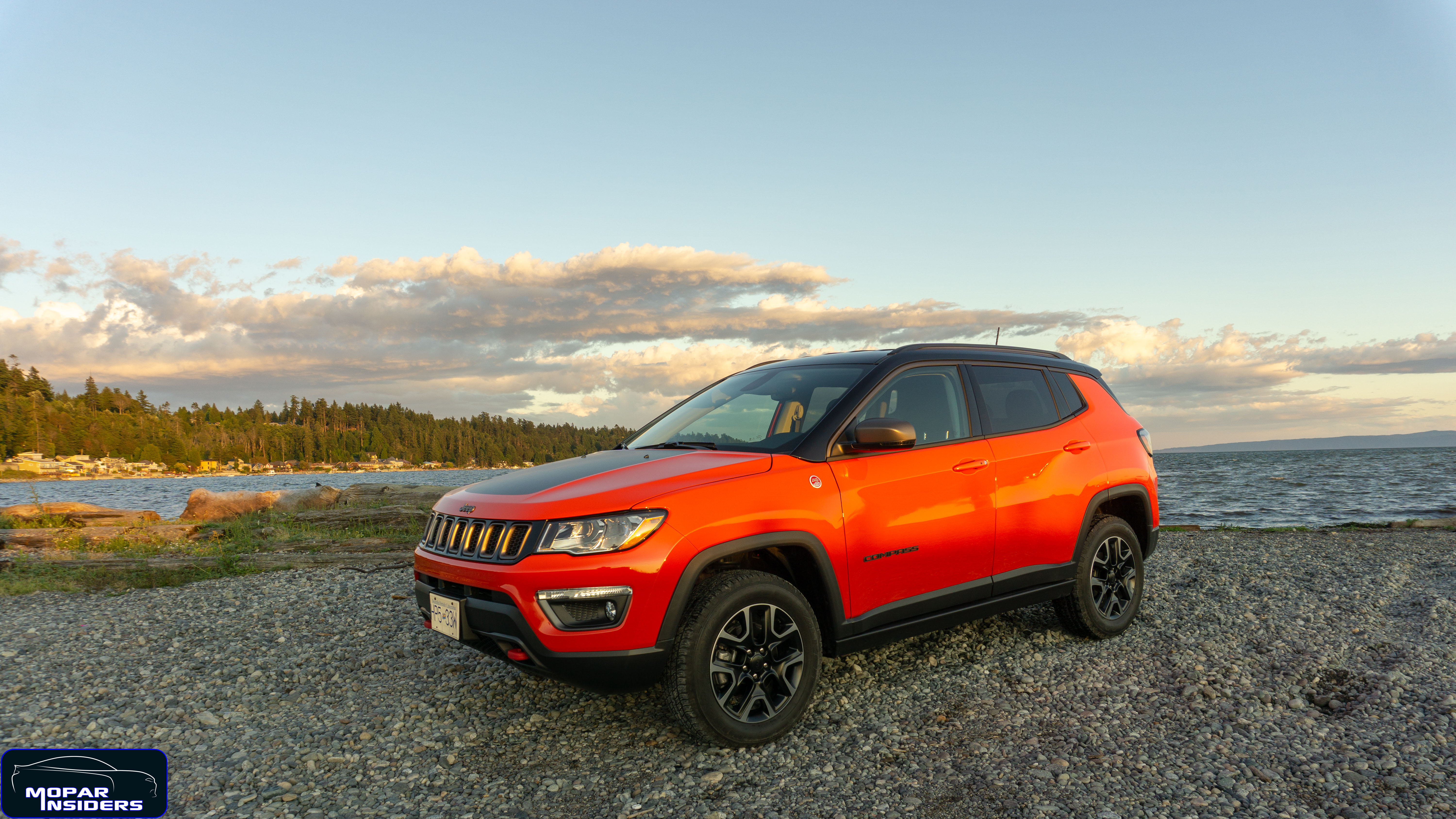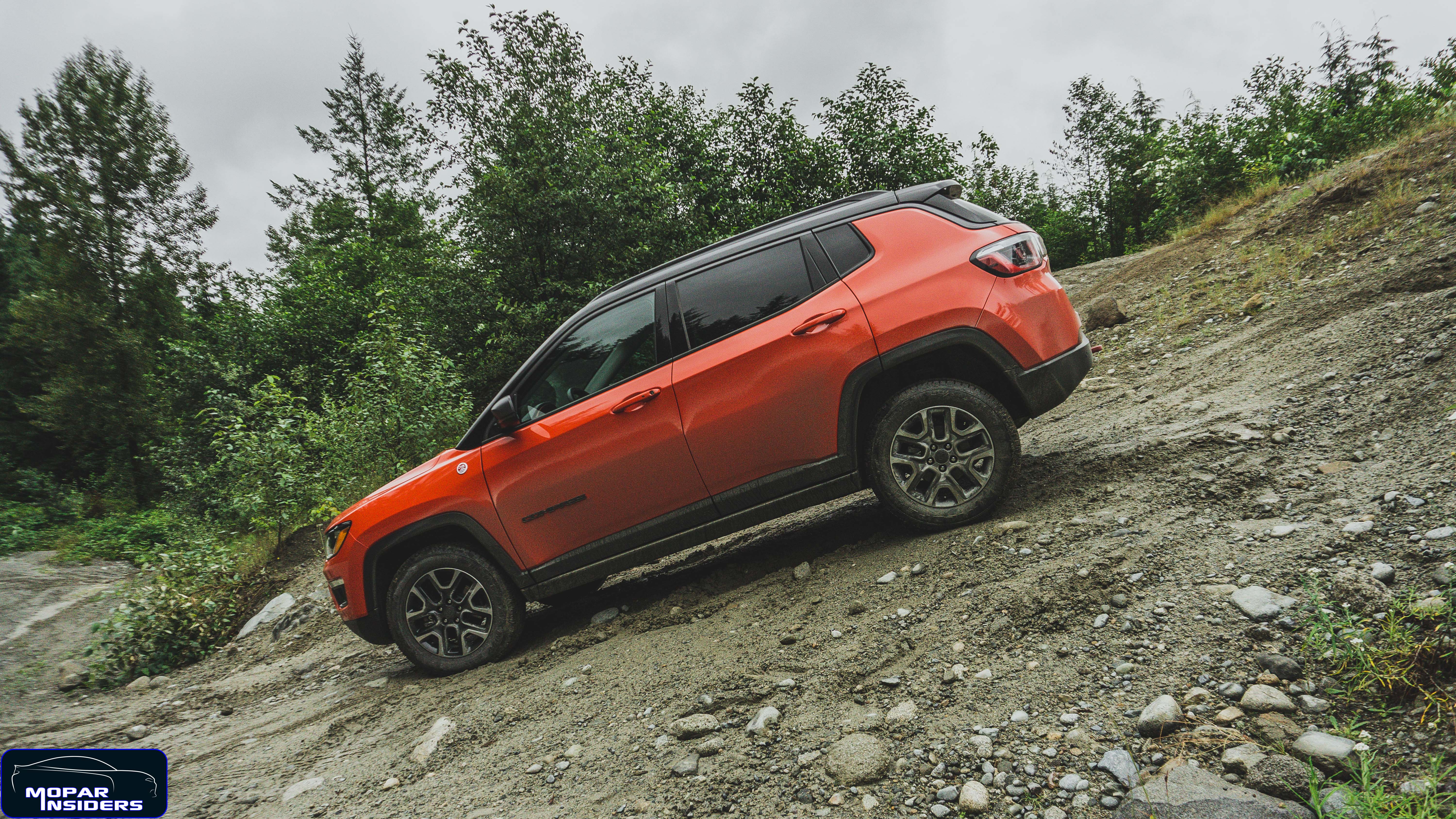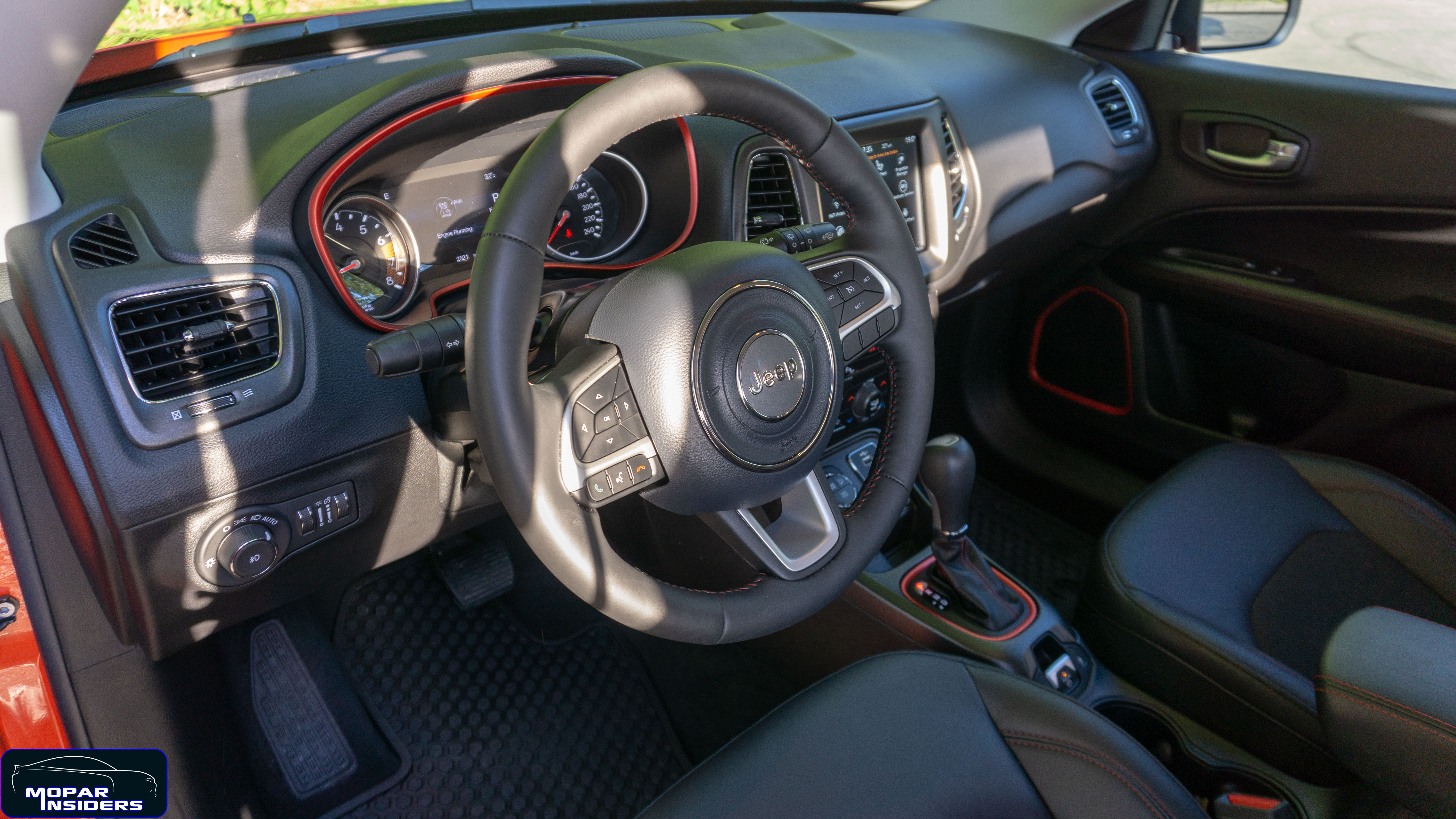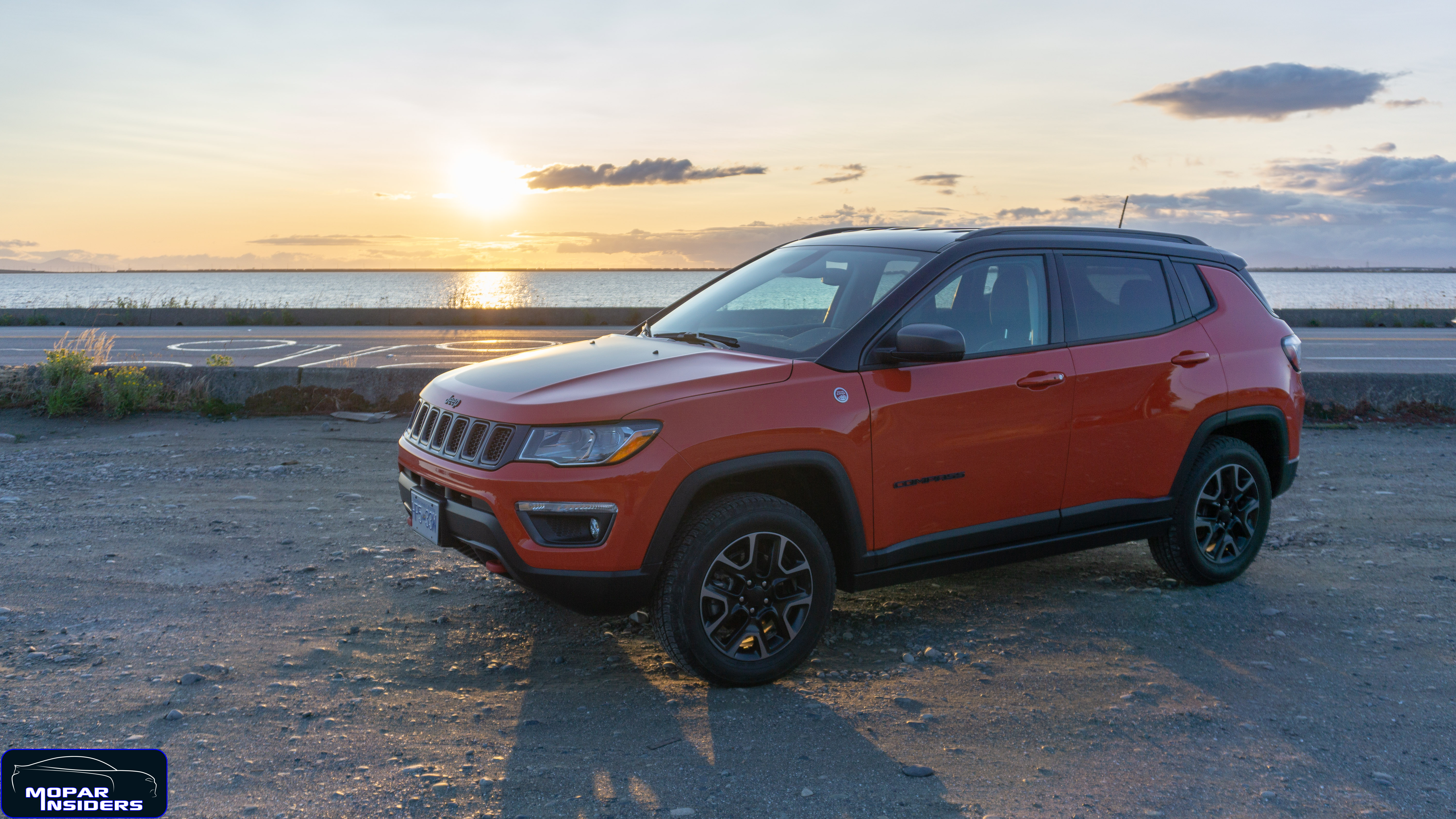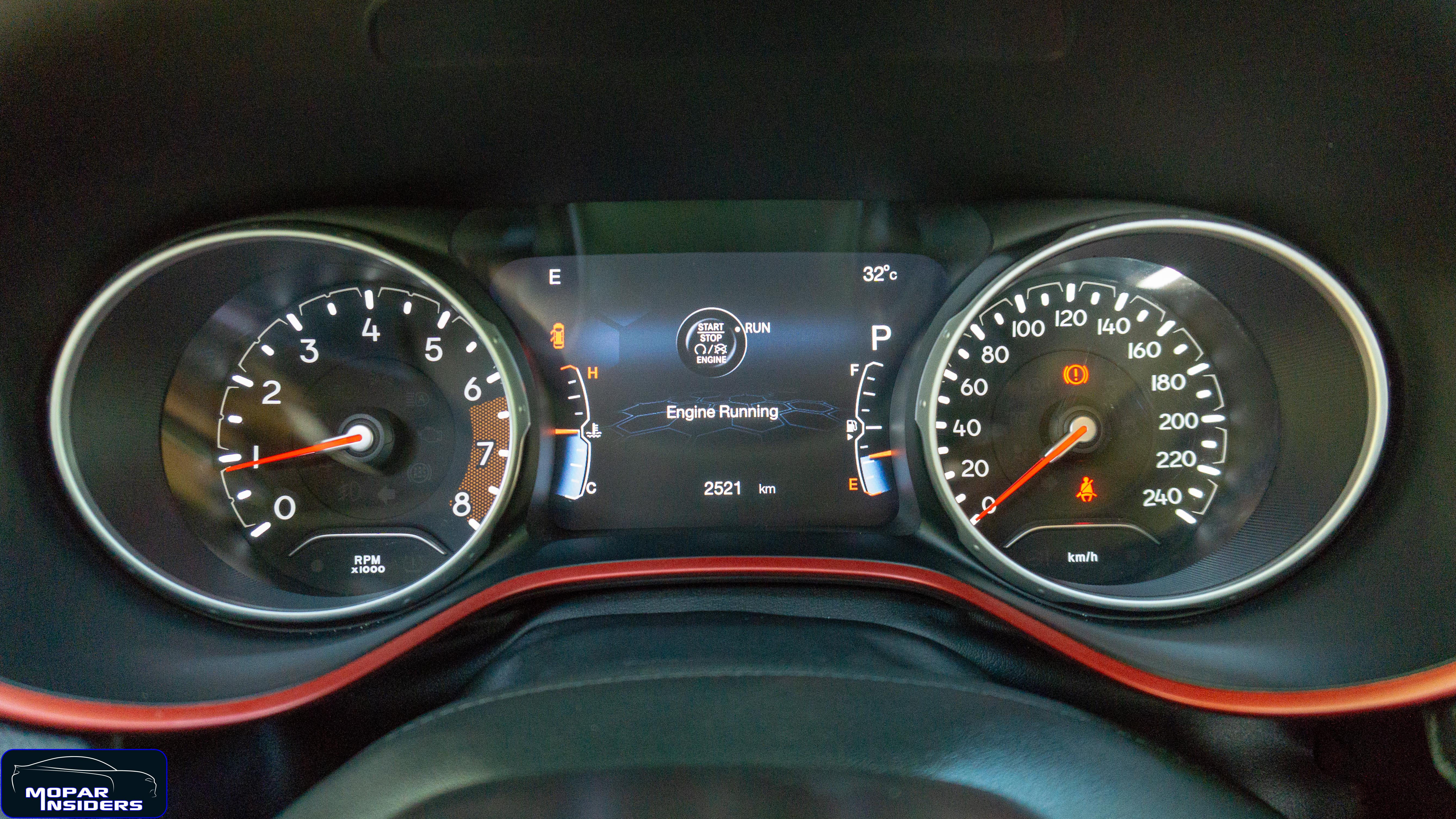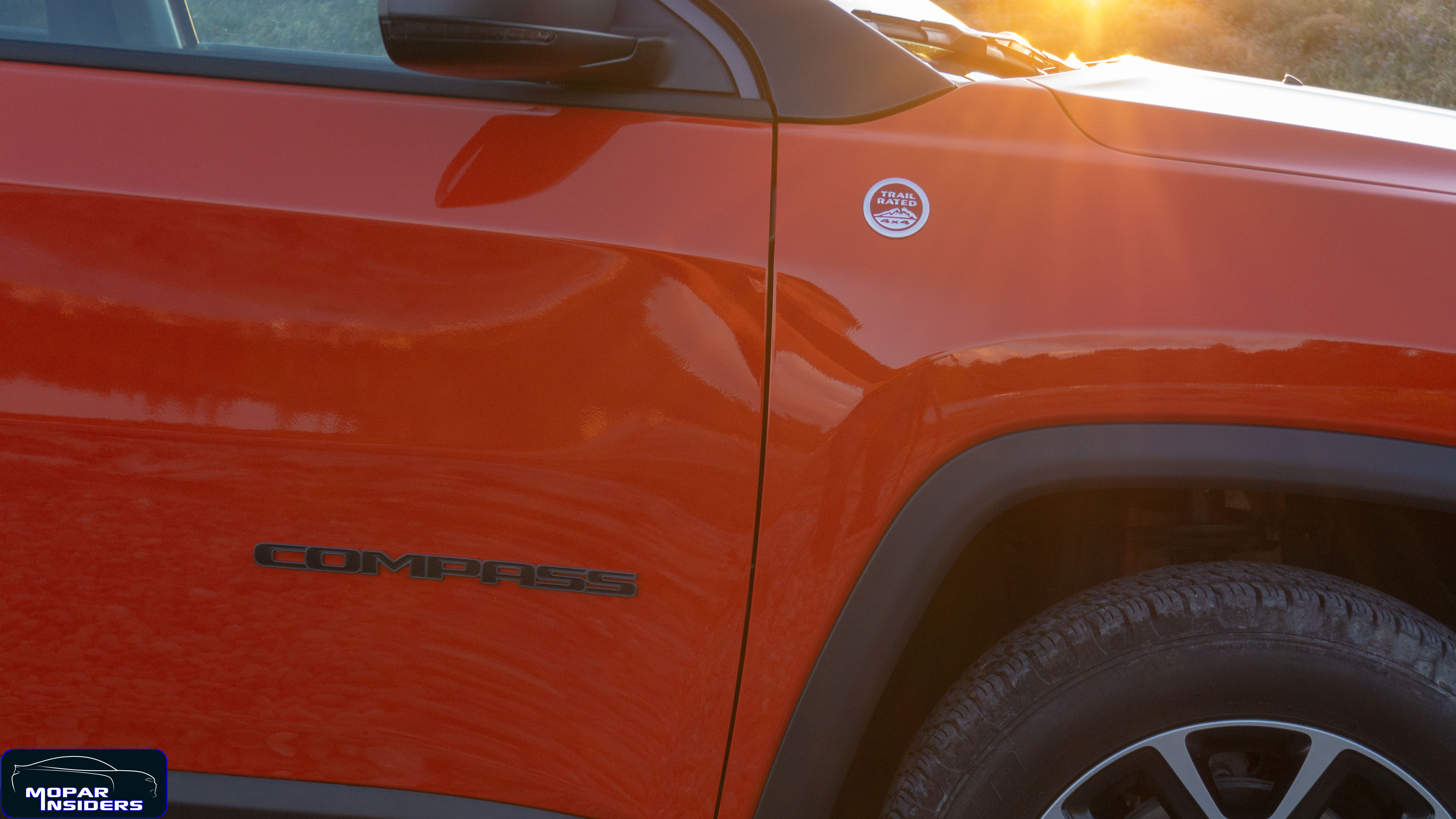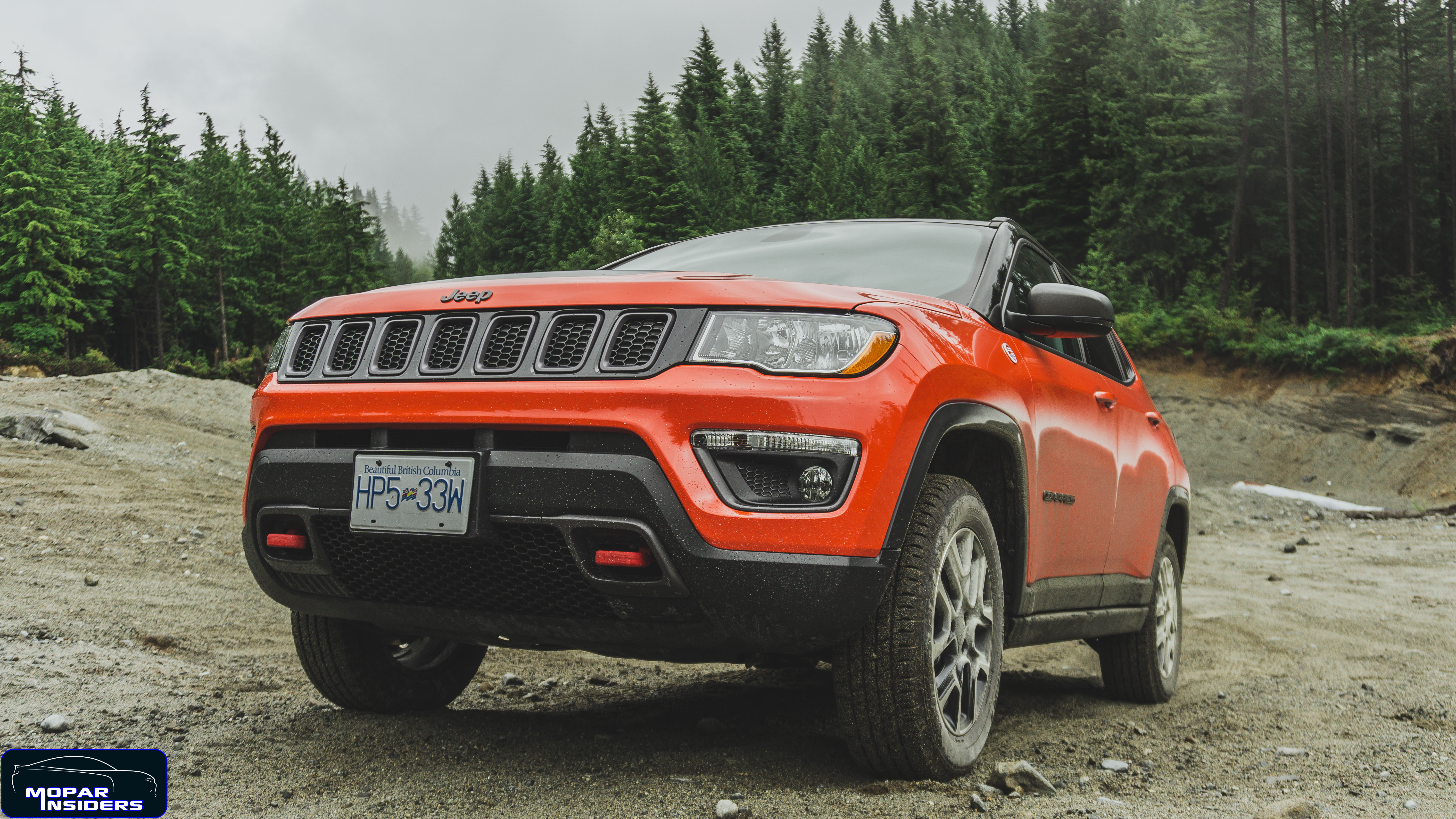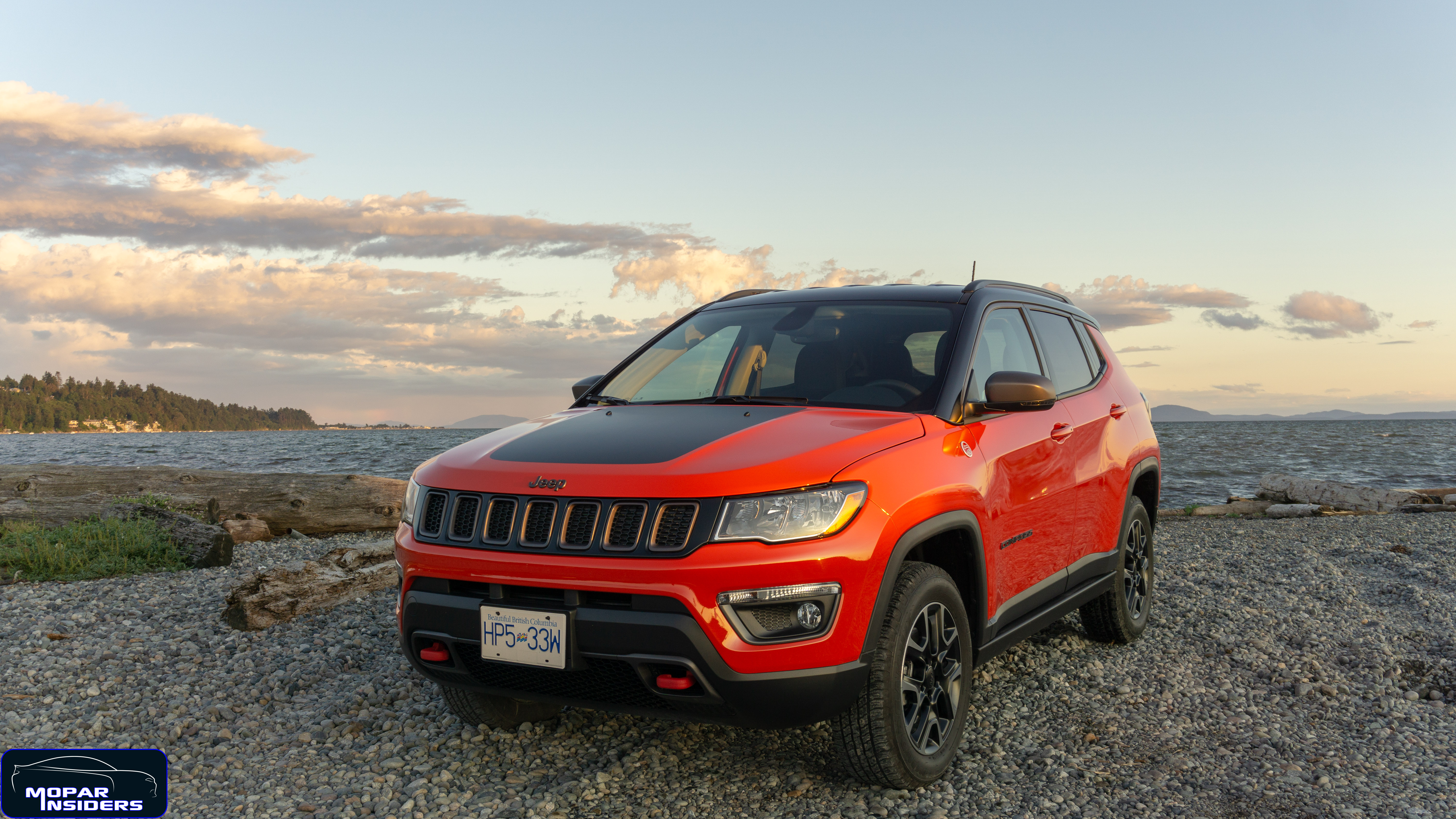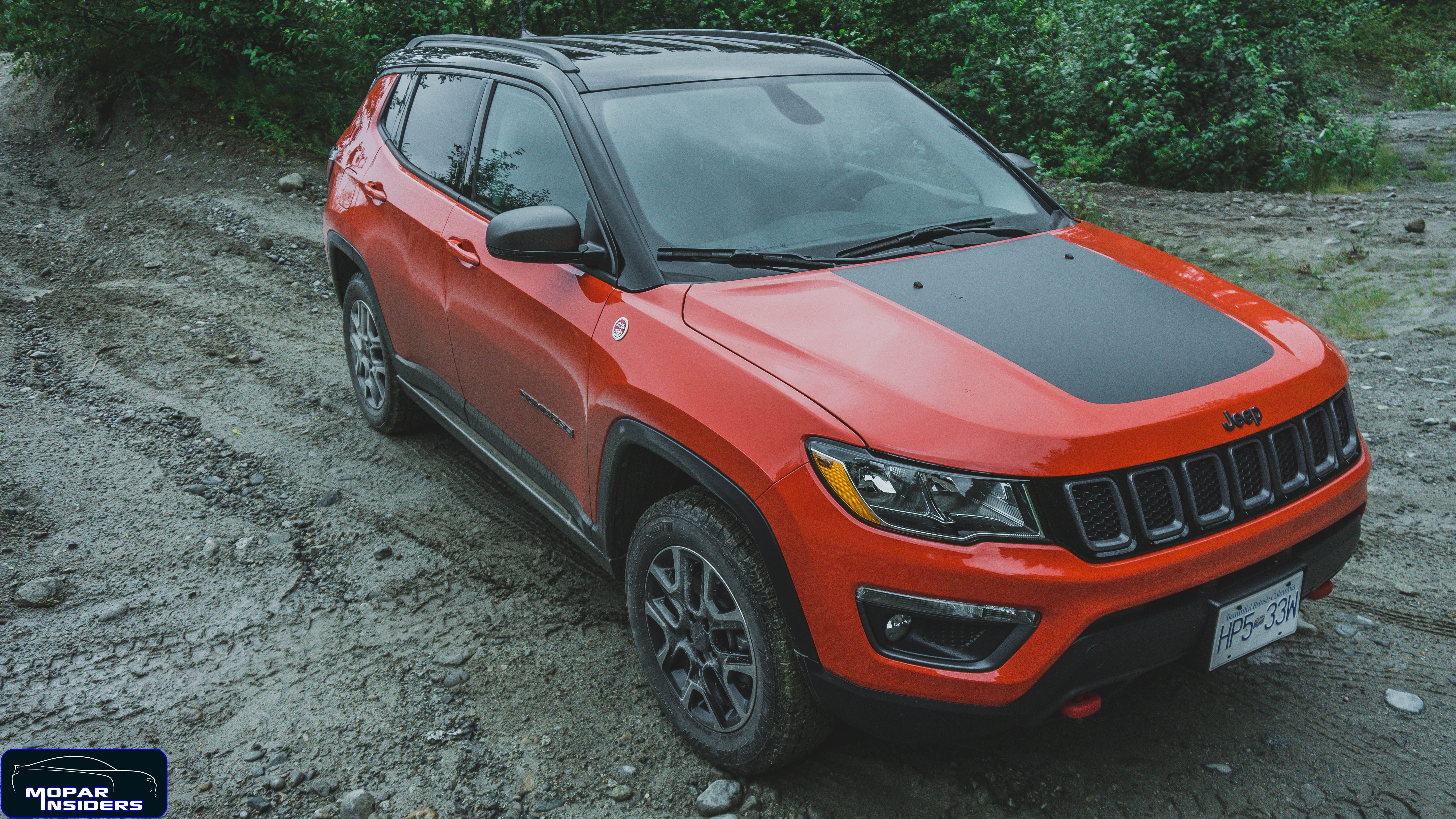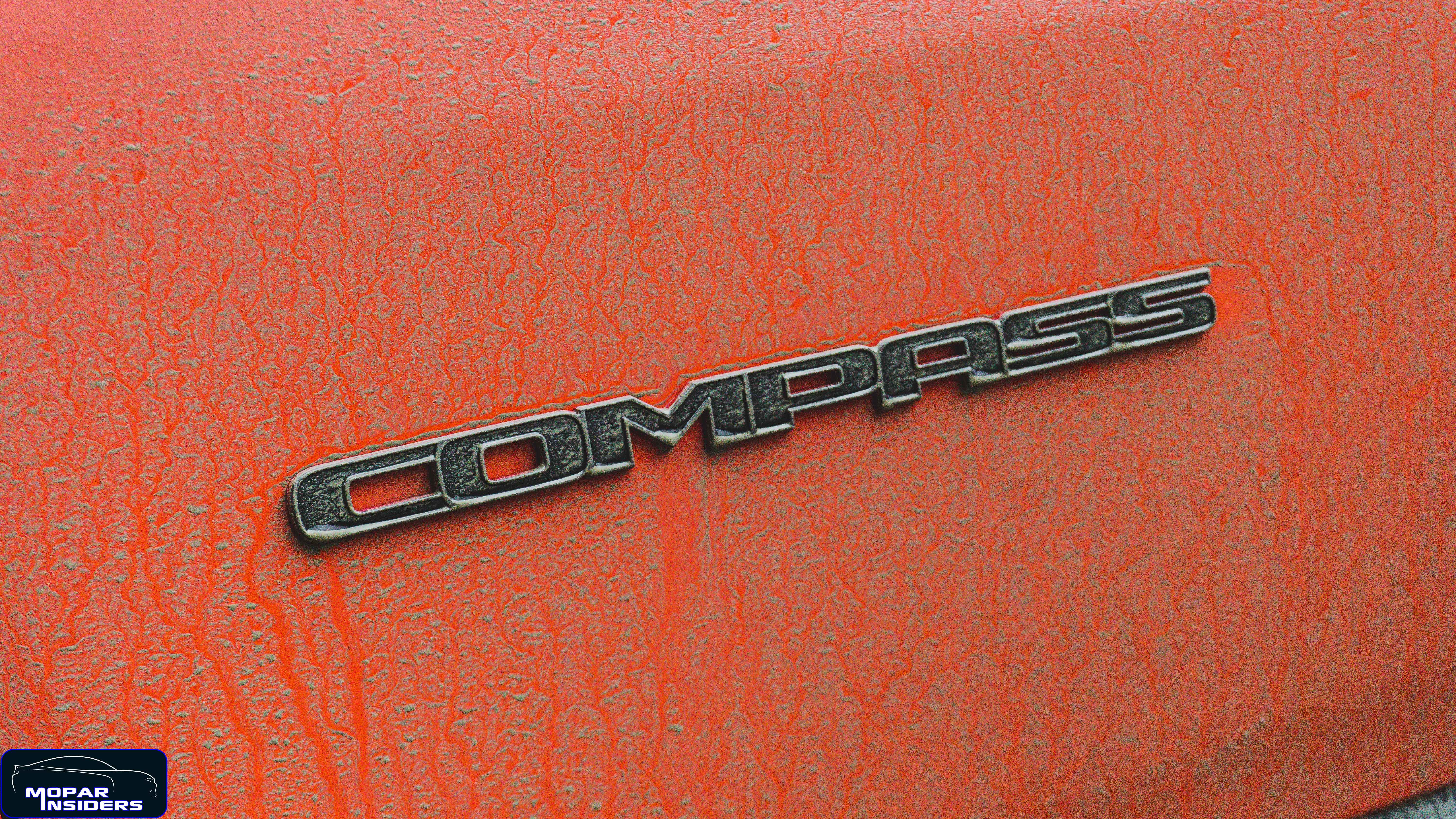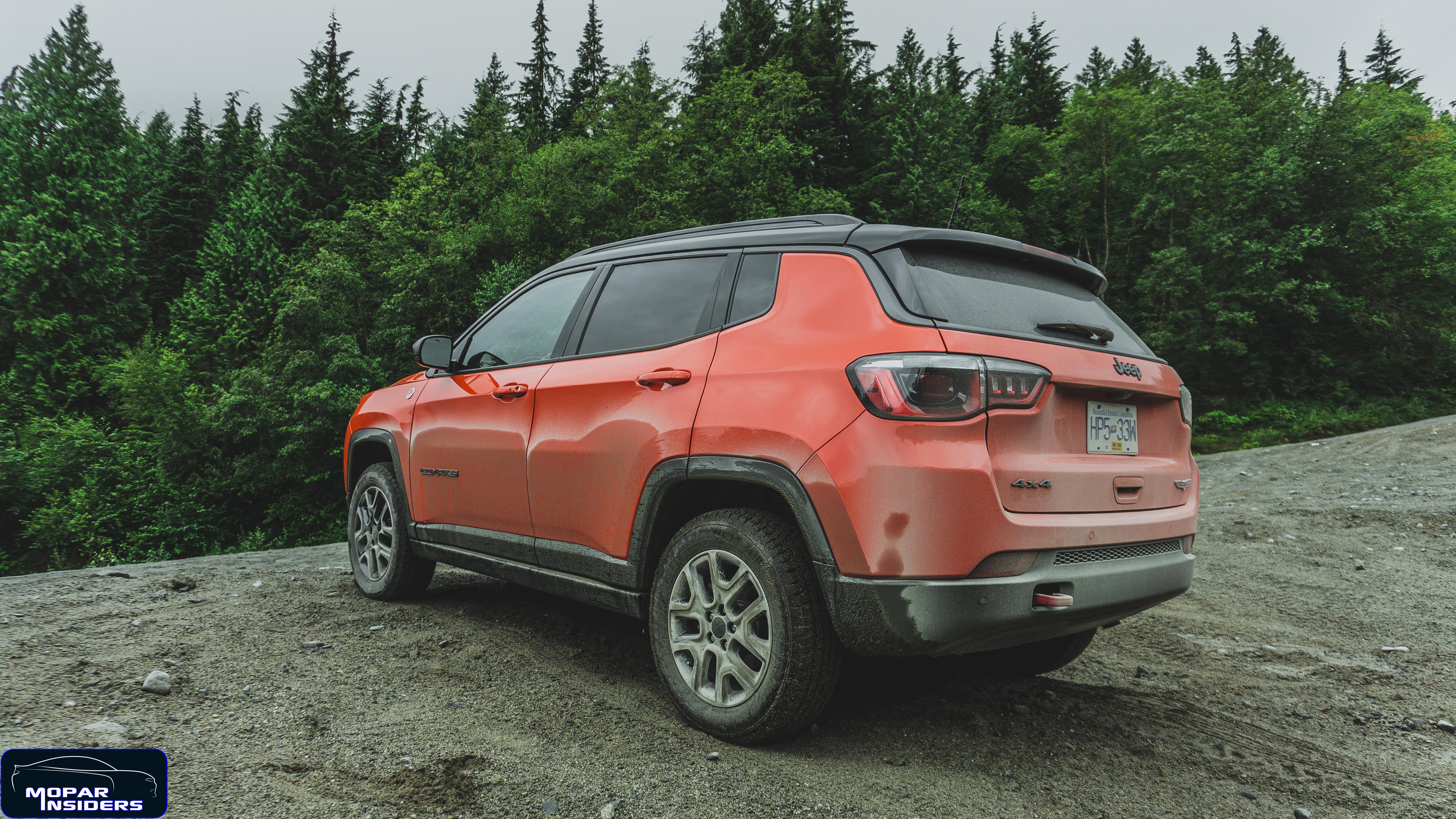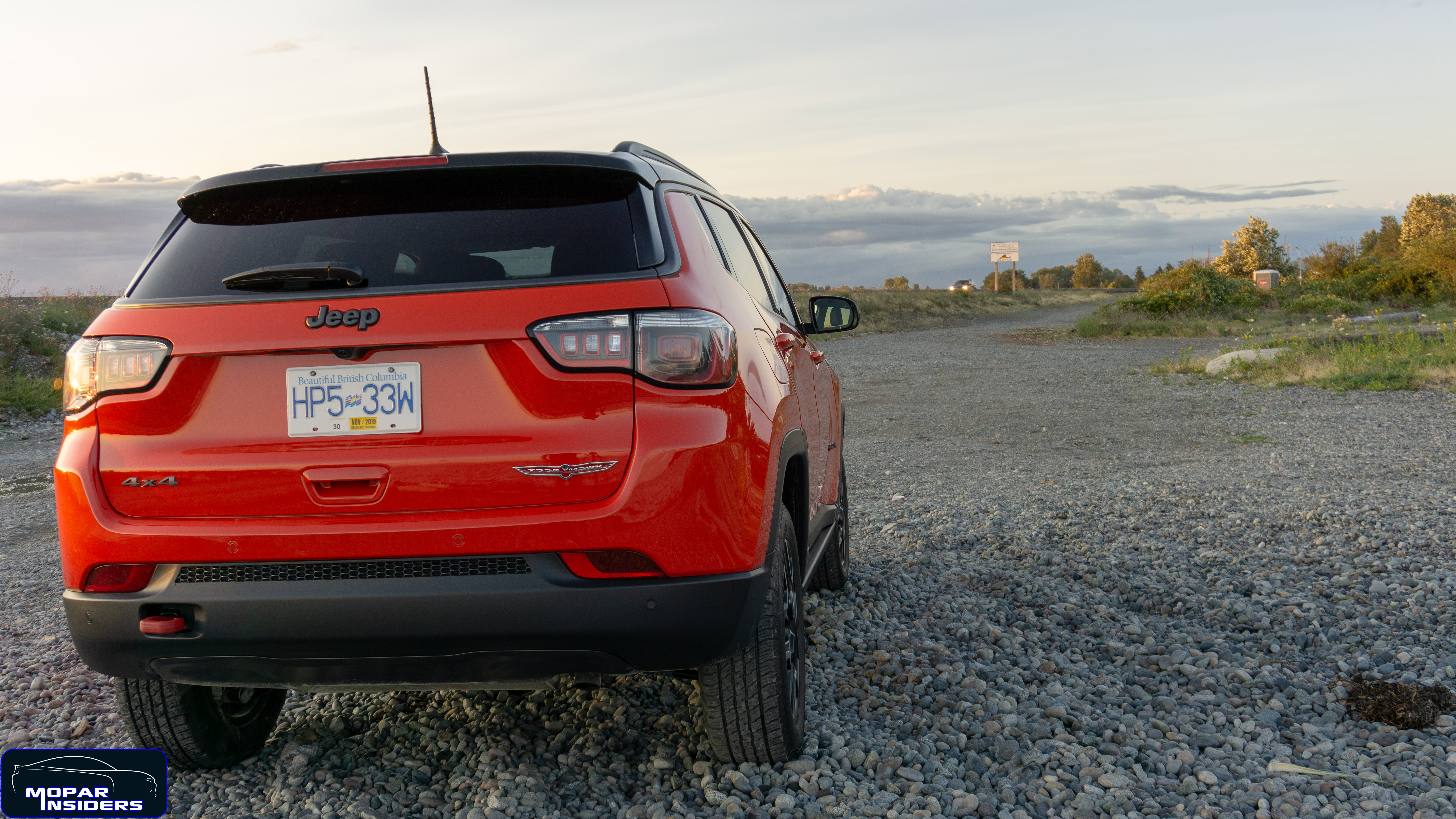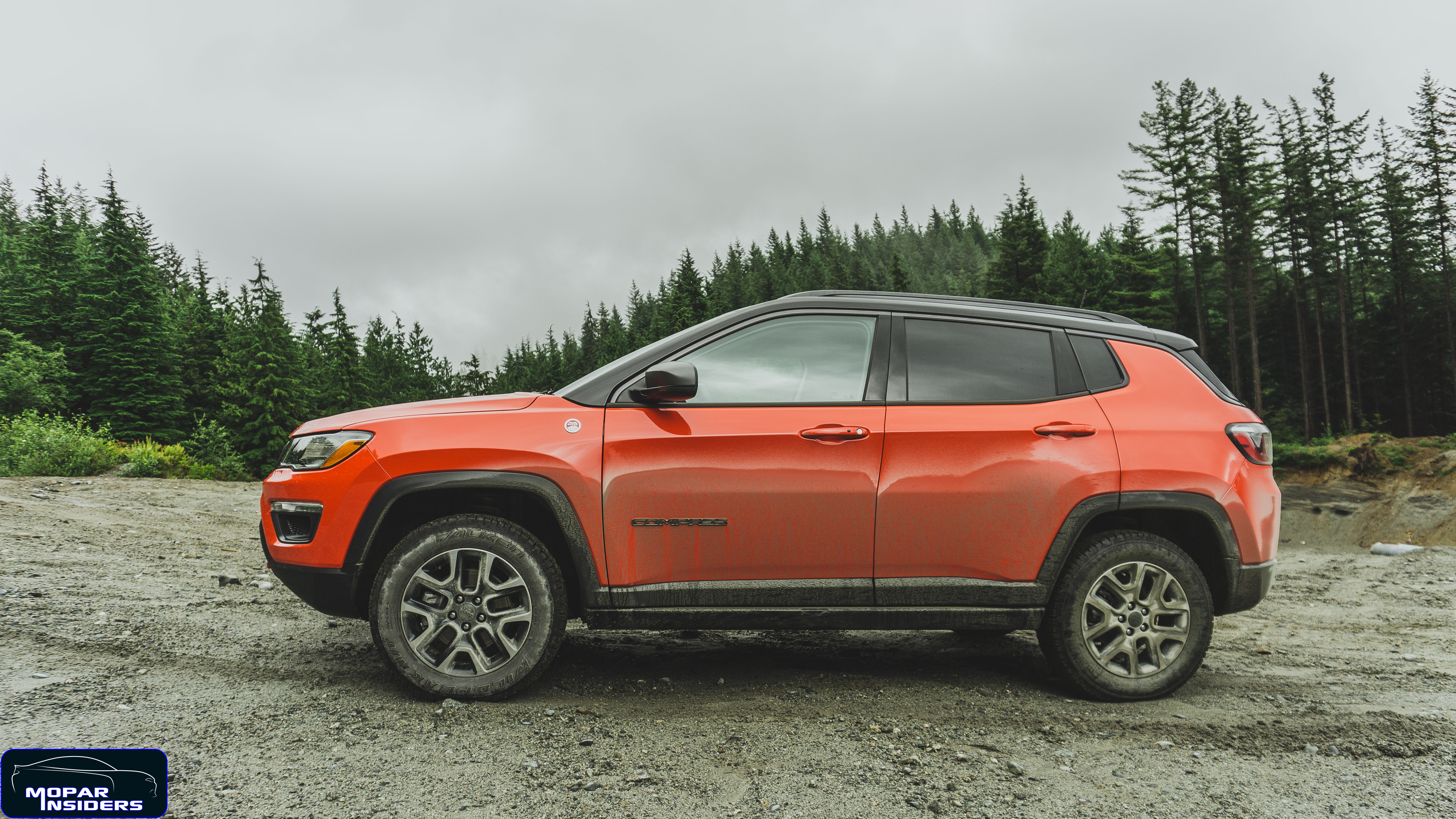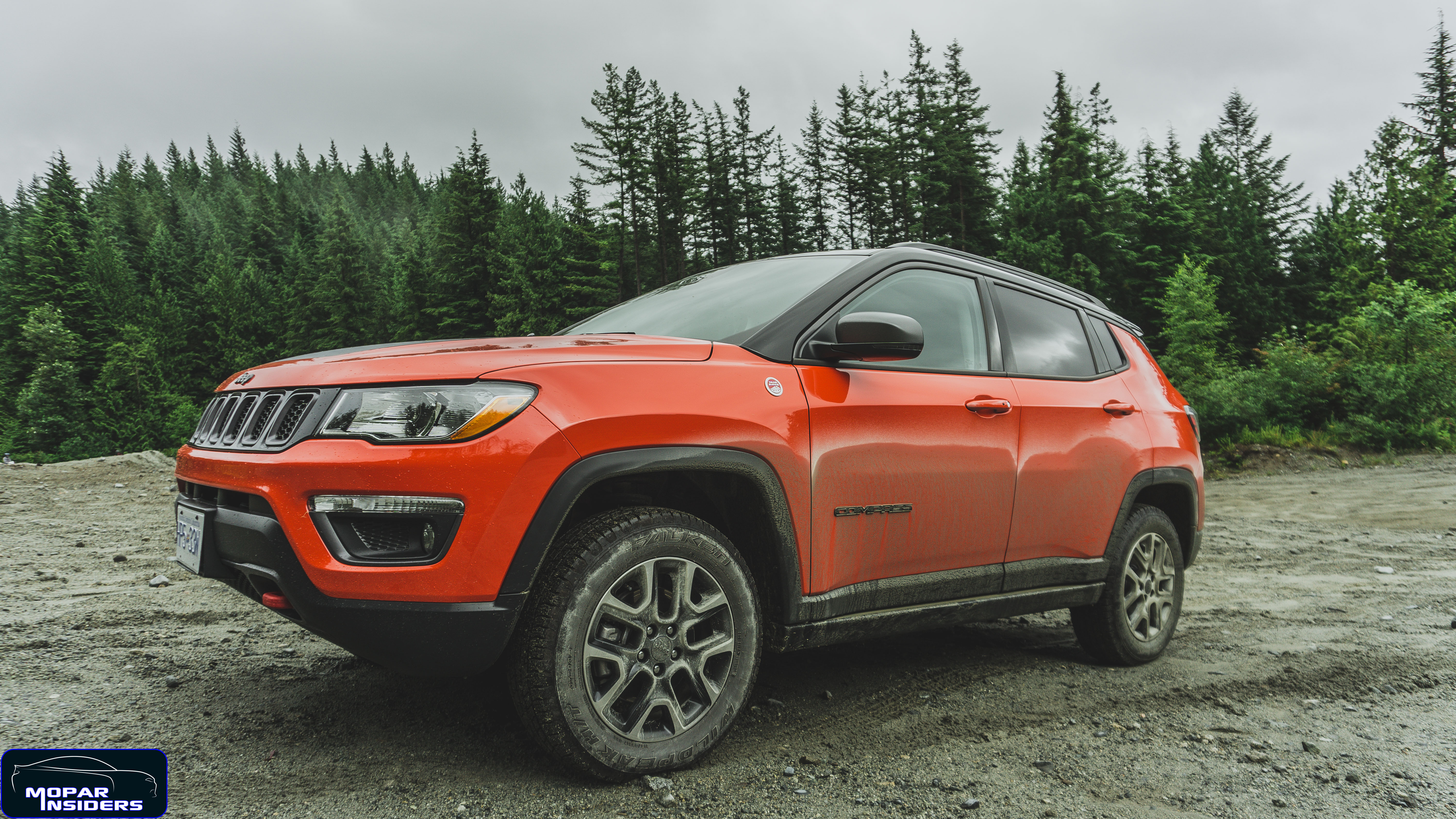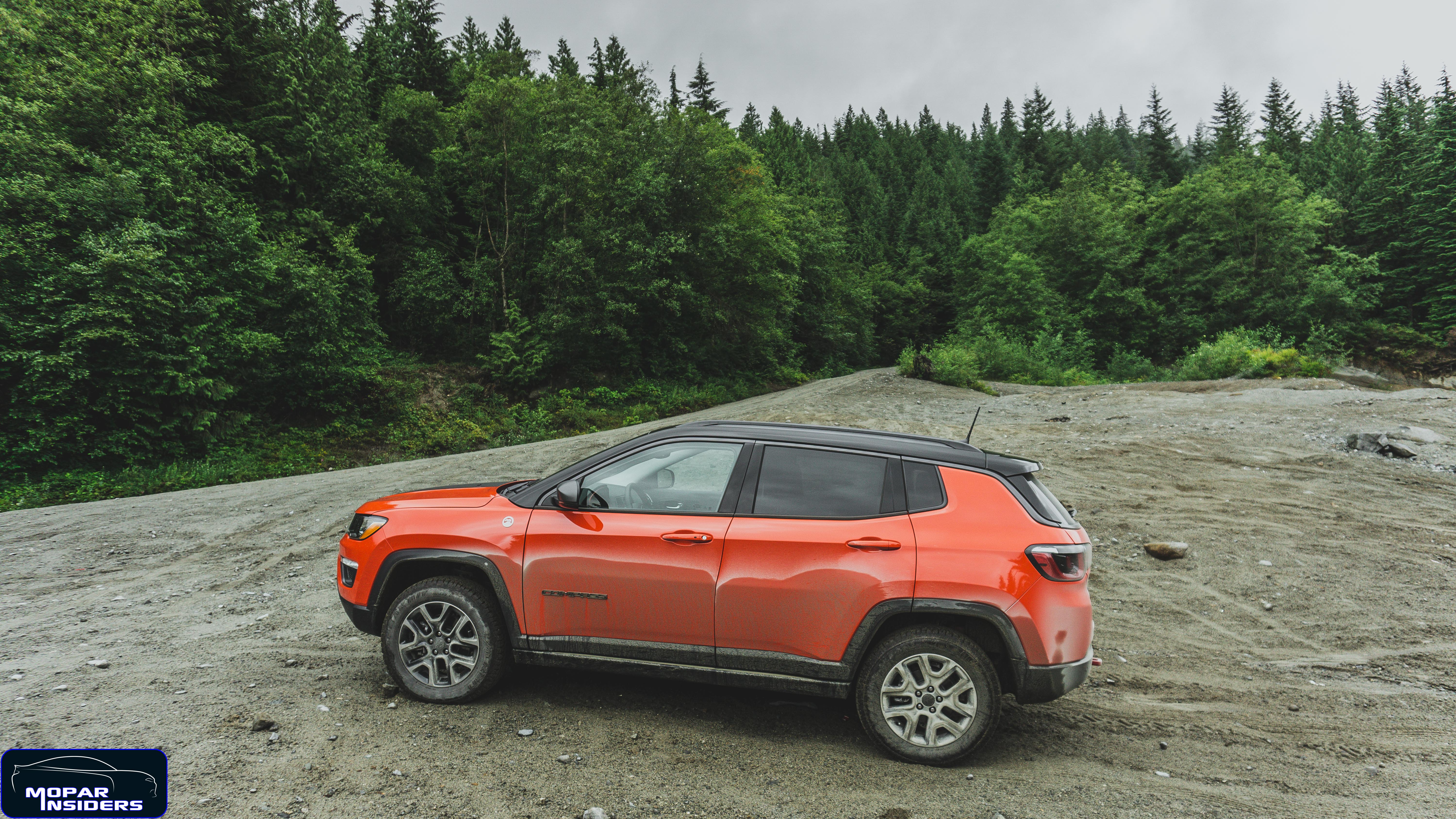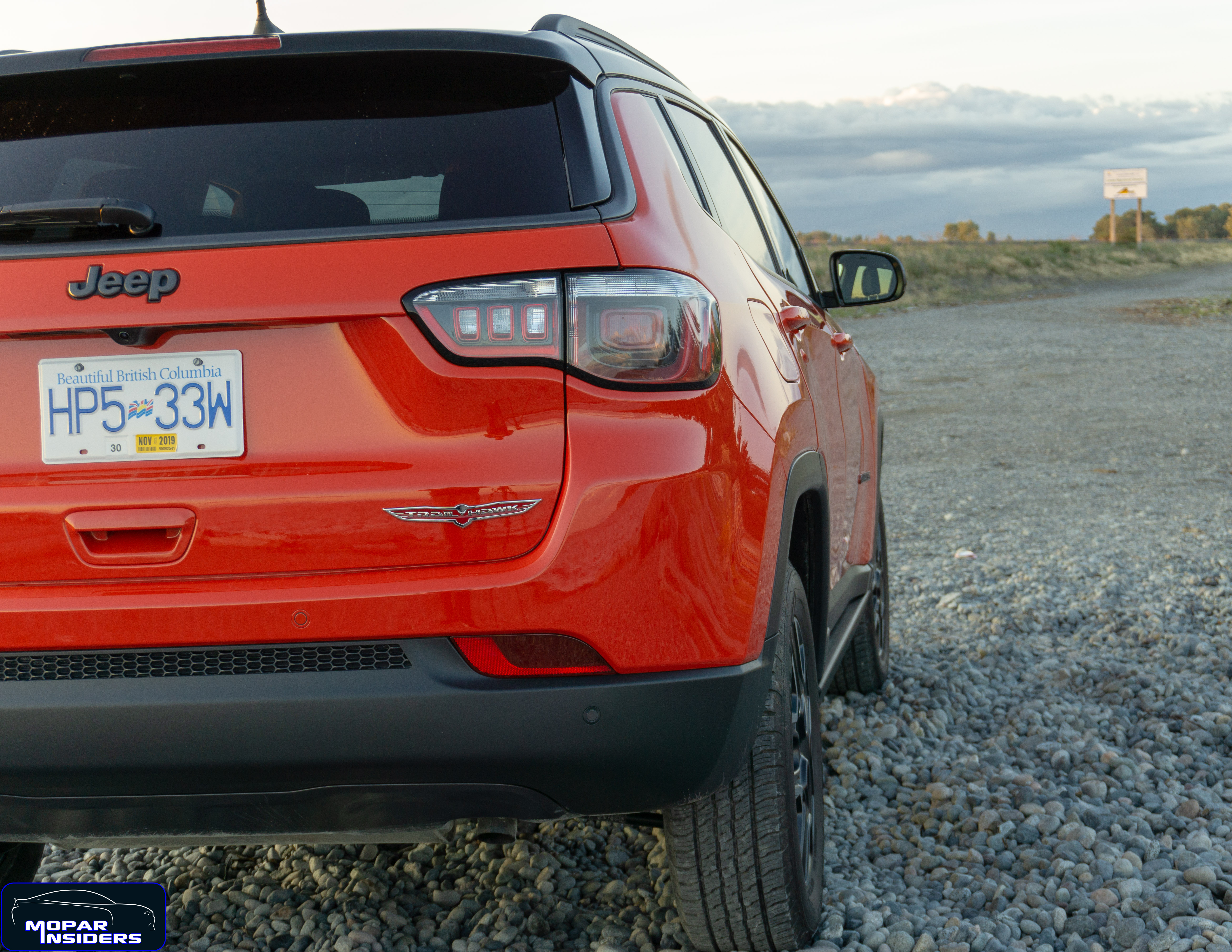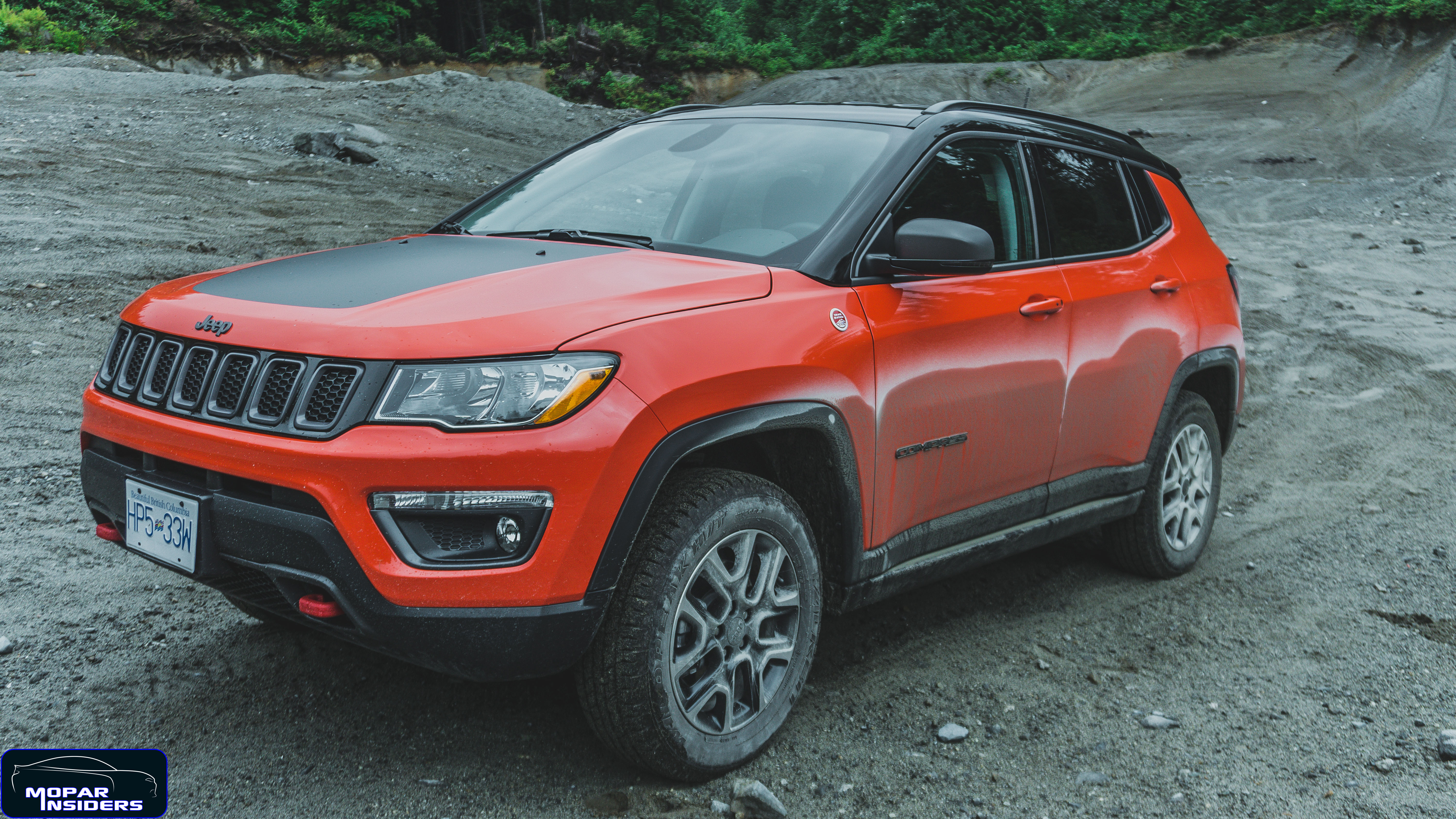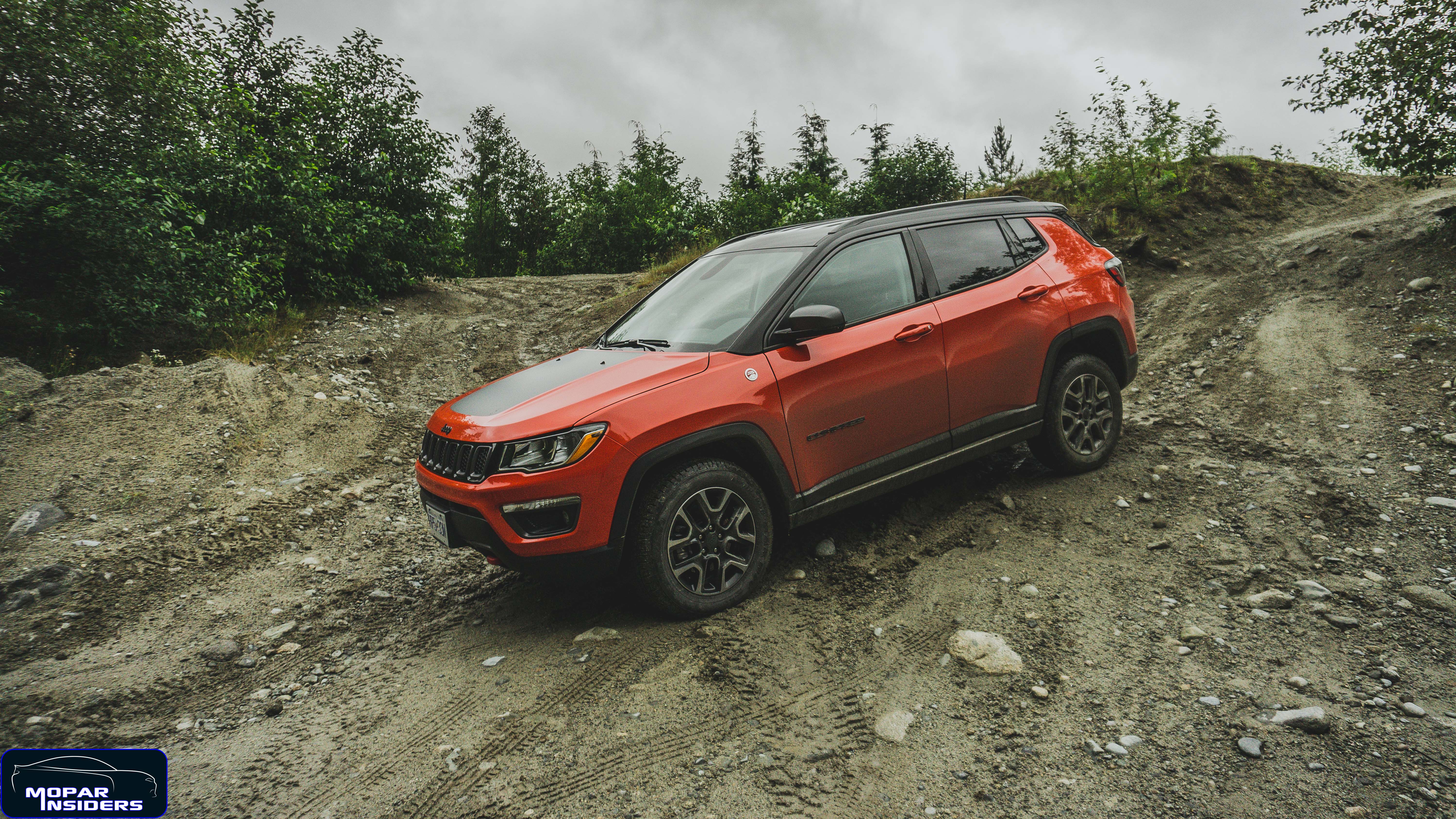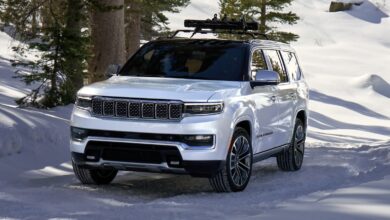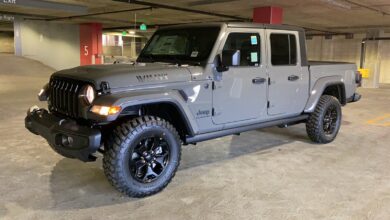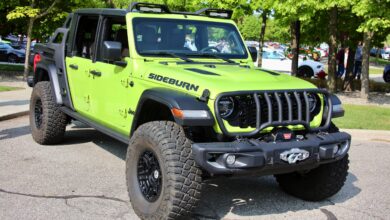The Jeep® brand launched an all-new Compass in 2017, replacing the frumpy old Compass with this all-new global model, which is available in over 100 countries worldwide. Jeep® was nice enough to send us over a 2019 Jeep Compass Trailhawk for a week and lets just say there is a lot to like about this compact SUV.
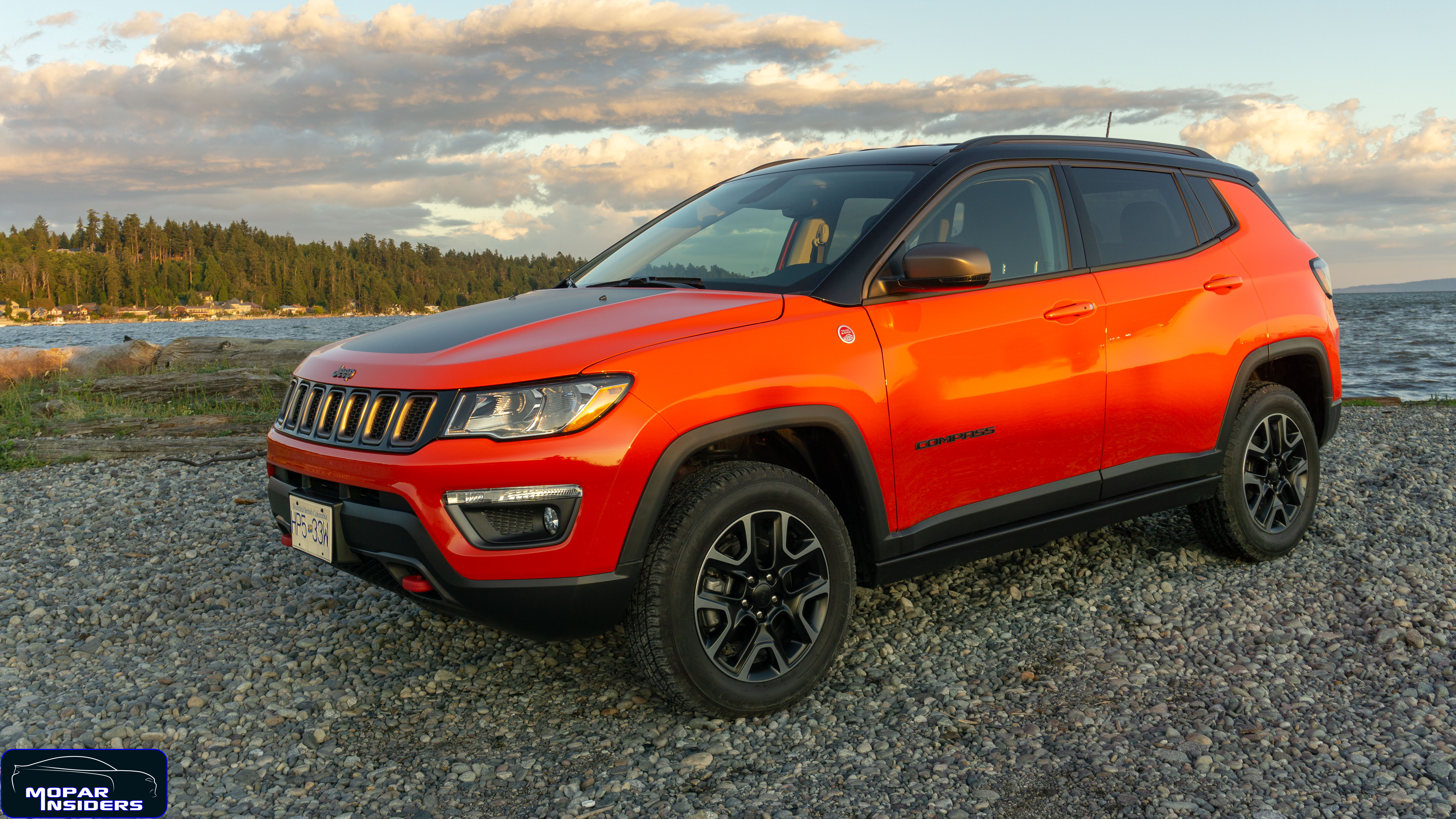
The exterior of the Compass is quite attractive and upscale looking for the compact SUV (Jeep calls it an SUV, even though it is based on a front-wheel-drive platform, which is truly a crossover or CUV) segment. Our Trailhawk tester is finished in Spitfire Orange Clear Coat (which is only available on Sport and Trailhawk models) with a matte black hood decal, gloss black roof and metallic gray badges, mirror caps and window trim which gives off a nice contrast. Trailhawk models also get unique 17-inch wheels wrapped in 215/65/17 Falken WildPeak all-terrain tires, Trailhawk specific front, and rear fascias, and red tow hooks front and rear. The Trailhawk specific bumpers and short wheelbase offer up impressive 30-degree approach, 24-degree break over and 34-degree departure angles.
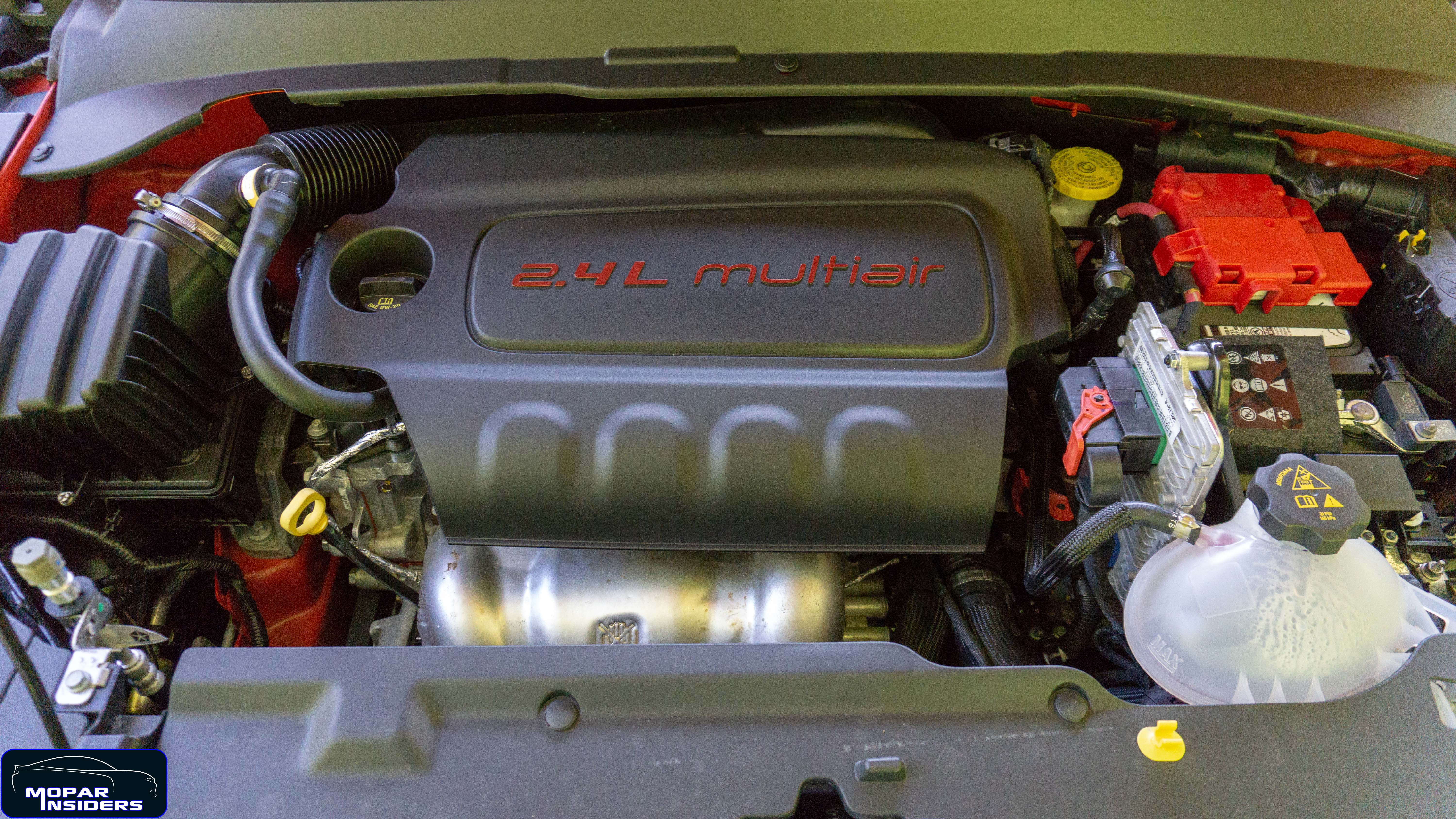
The standard and only engine on all Compass models is the 2.4-liter Tigershark multi-air four-cylinder which puts out 180 horsepower and 175 lb.-ft of torque. Three transmissions are available, a 6-speed manual on front-wheel-drive models only, 6-speed automatic which again is only available in front-wheel-drive models, and the ZF-sourced 9-speed automatic which is standard on 4×4 models. All automatic versions of the Compass feature Engine Start Stop (ESS) technology which is relatively smooth compared to other stop-start systems but a little slow to get the engine back up and running after you let your foot off the brake. Luckily there is a button to disable the stop-start system in the center console.
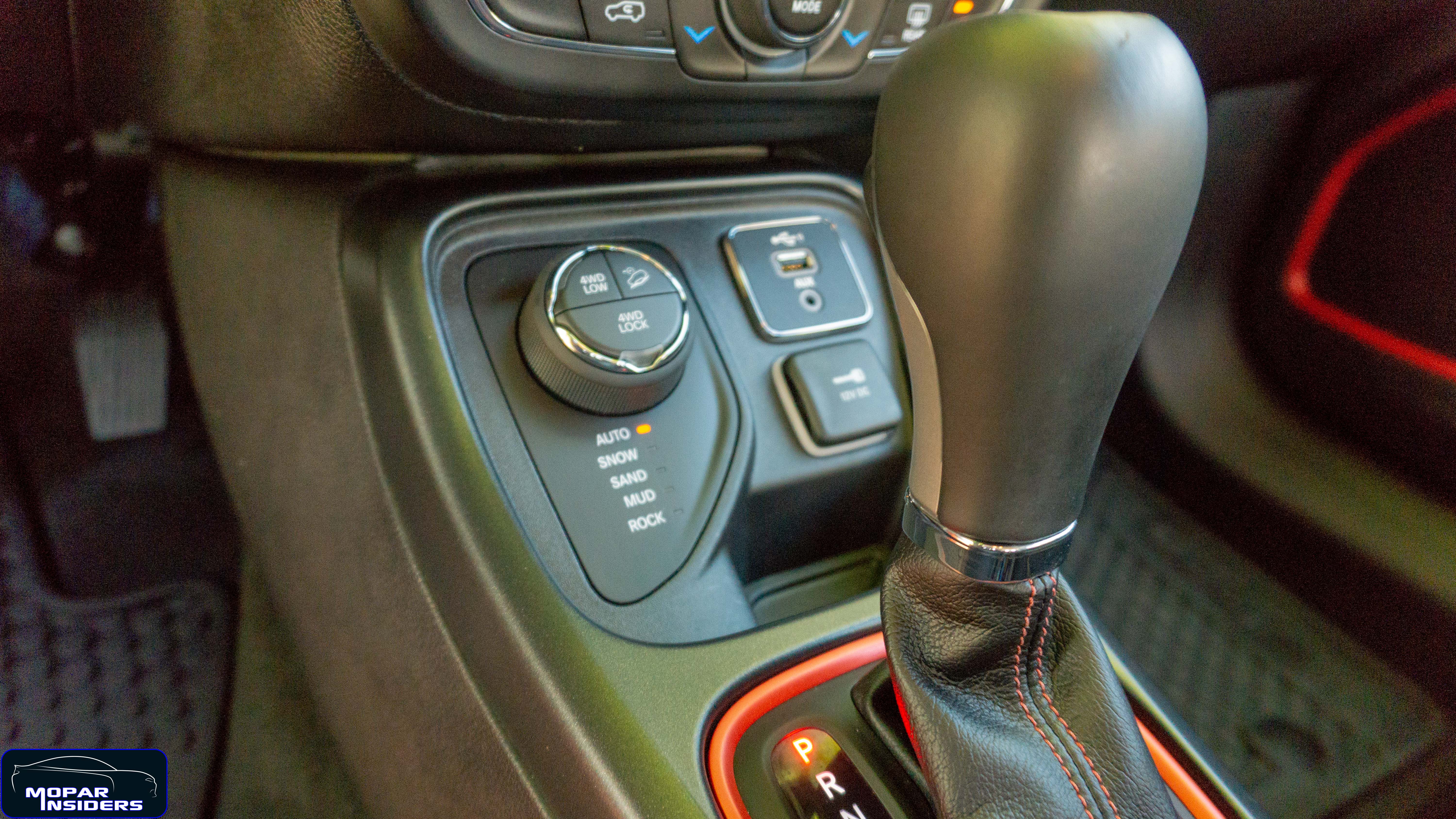
The Trailhawk comes standard with Jeeps active drive low four-wheel-drive system, making it the most off-road capable vehicle in its class. This system is a full-time four-wheel-drive system with a four-wheel-drive low mode that has a 20-1 crawl ratio. There is a rotary dial in the center console that allows you to choose different terrain modes, in the center of the dial are controls for four-wheel-drive low, hill descent control, and a four-wheel-drive lock button.

The interior of the Compass is attractive, emulating the larger Cherokee and Grand Cherokee design and of a much higher quality than you would expect of a vehicle in this class or price point. High quality, soft-touch materials abound on the dash and door panels, the switchgear has a chunky solid feeling as well which ties in well with Jeeps image. The gauge cluster is easy to read with large tachometer and speedometer flanking a 7-inch customizable display. The excellent 8.4-inch Uconnect 4C system is mounted up high on the dash and features apple carplay and android auto functionality. Down below the screen are the volume and tune knobs, and controls for the automatic dual-zone climate control system. All the controls are straightforward and easy to use, but I did find the climate controls to be mounted a little low on the dash for my liking. Front-seat room is good, and I found it quite easy to get comfortable in the driver’s seat, one gripe I do have is that I wish the tilt and telescoping steering wheel would tilt a little further down.
Sitting in the rear seat with the driver’s seat set to my position (I’m 6’1) and I still had about 2 inches of knee room and about an inch and a half of headroom. The rear cargo area is also a good size and the rear seatbacks are set up in a 60/40 split-folding style to allow for even more cargo volume when needed. For such a small vehicle the Compass is quite roomy and makes good use of that room with intelligent storage options.
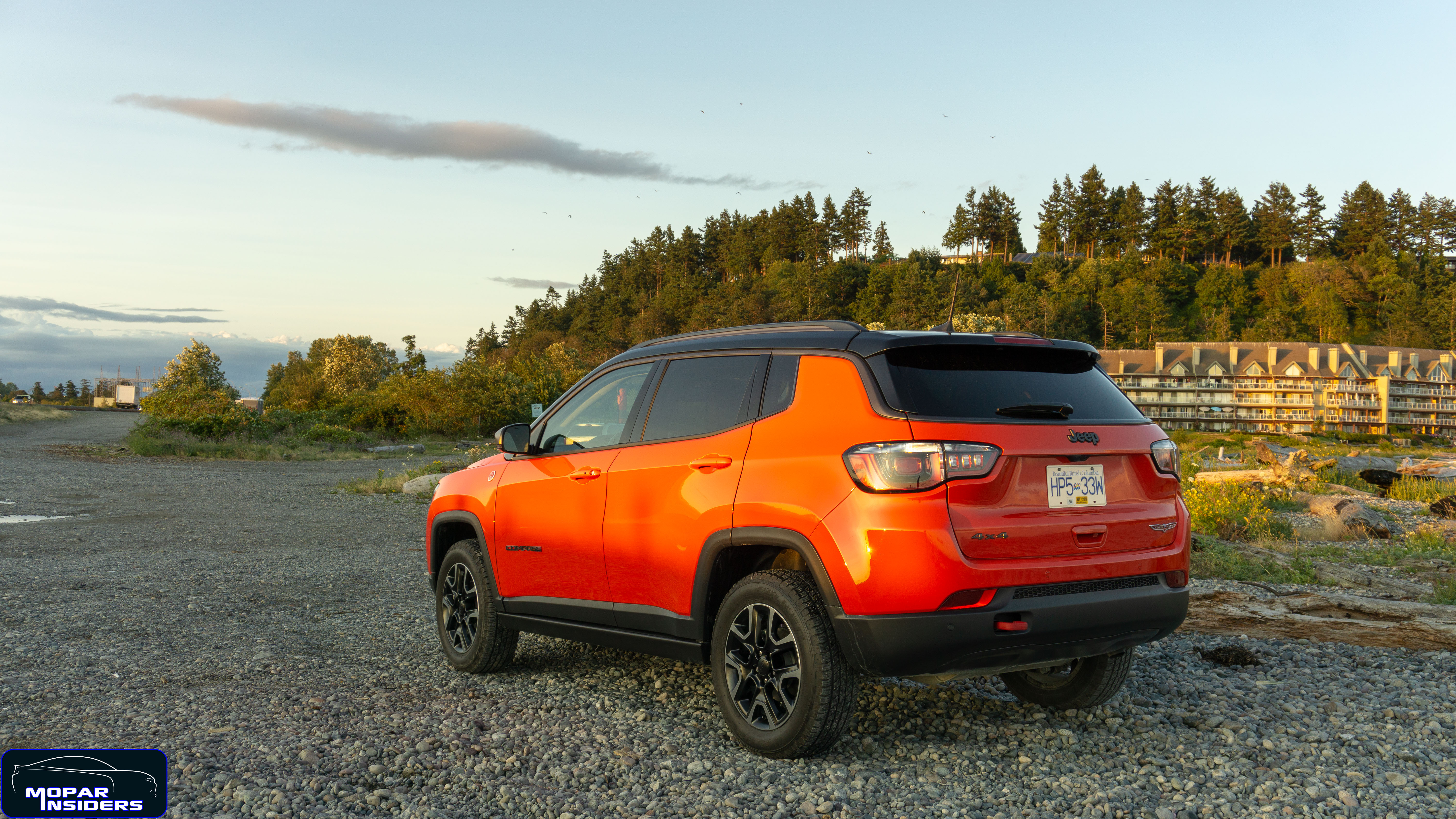
Out on the road, the Compass behaves exceptionally well. The suspension tuning is just right absorbing bumps nicely while not producing an overly dampened ride. Body roll around corners is kept in check, and the steering feels rightly weighted and direct. The brakes are a little touchy at first, but you get used to them quite quickly, and they feel strong. Visibility is excellent all-around although the D-pillar is a bit chunky, the optional safety and security group with blind-spot monitoring provides peace of mind while changing lanes. While the cabin is nice and quiet overall, the powerplant does groan when pushed hard. I found the 2.4-liter four to be adequate at best, decent in around-town driving but with lacking acceleration on highway on-ramps. While the vast majority of consumers would be happy with this powerplant and to be fair it is on par with other compact crossovers, I do wish that a step-up engine option was available. Over the course of the week, I averaged 10.4 liters per 100km (22.6 MPG) with about 90% city driving which I found to be very impressive.
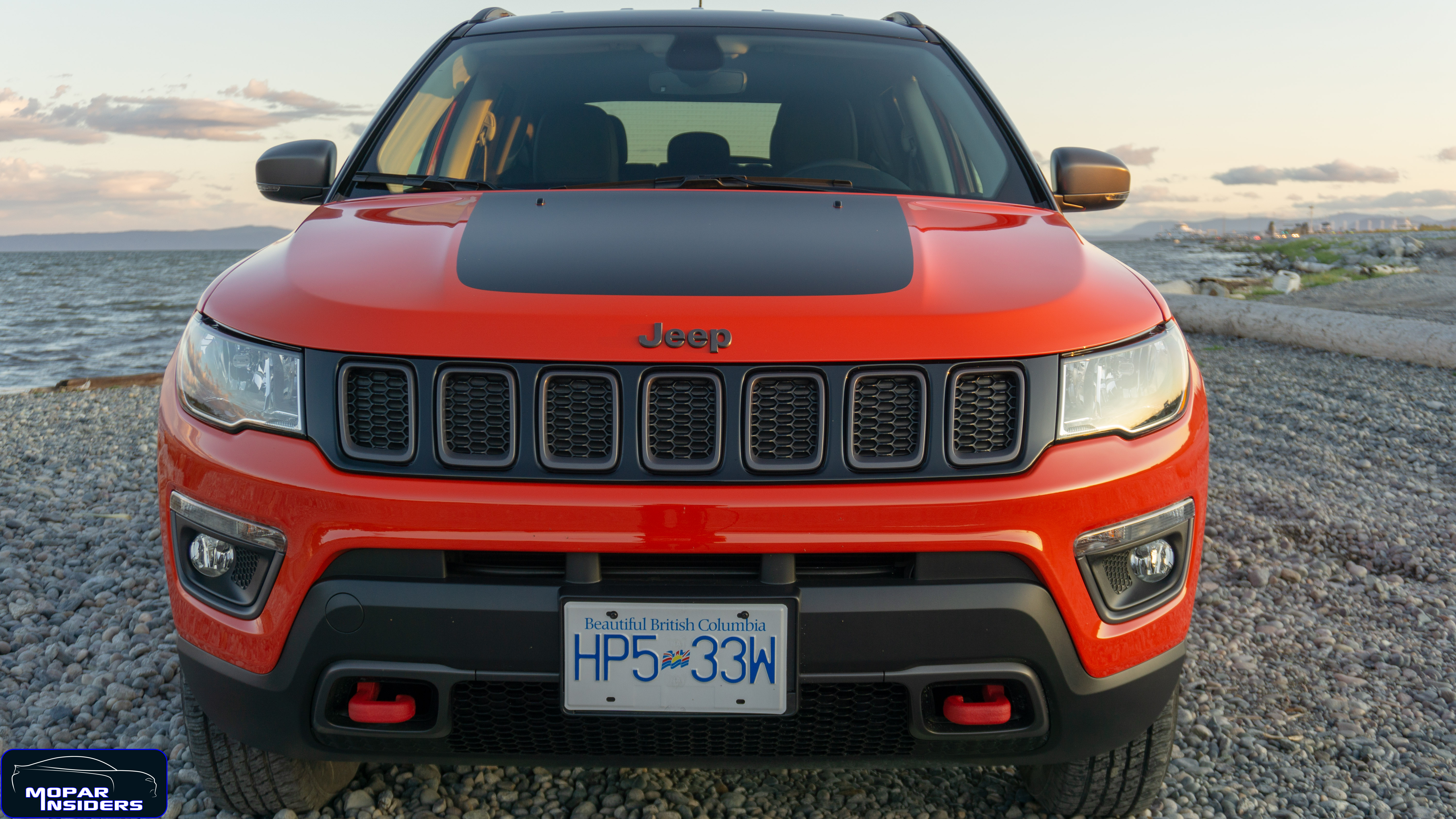
I enjoyed spending the past week with the Compass Trailhawk, it’s economical, nice to drive, attractive and comes in at a reasonable price point. The Compass Trailhawk 4×4 starts at 33,645 Canadian or 29,445 U.S. Our tester had the optional Cold weather group, Safety and security group, Popular equipment group, Mopar rock rails, UConnect 4c with Navigation and with destination charge stickers at $40,415 Canadian or $35,515 US. If you’re shopping for a compact crossover, the Compass deserves your attention.

